Everyone's favorite tourist destination in Switzerland (especially for the Japanese and, increasingly, the Chinese), Luzern is the door into the Bernese Oberland and high Alps.
It's got everything -- medieval old-town without cars, painted houses, lakeside amenities, alpine vistas . . . over-priced shops, sandwich-lunch for $40, not much "ambiance", but oh well, here we go.
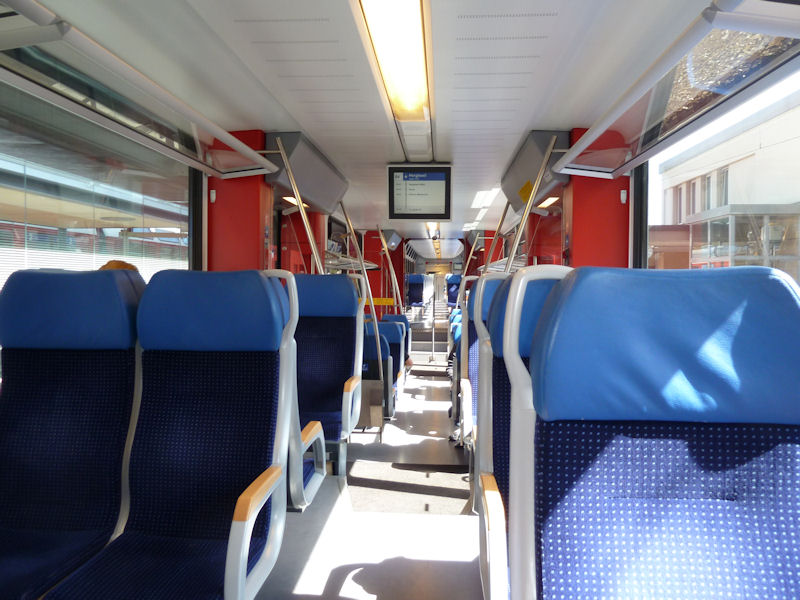
Lovely Swiss trains. We're staying just above Hergiswil and going in to see the sights of Lucerne for the day.
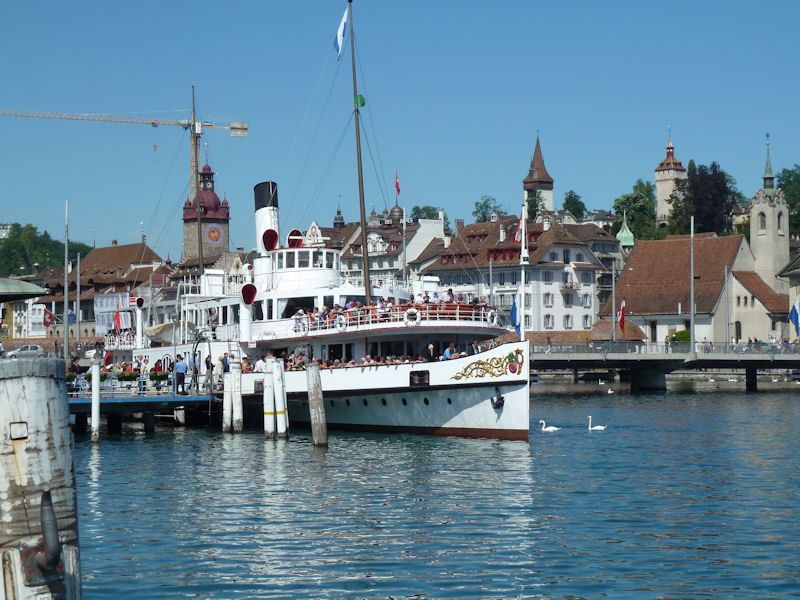
One of the five belle epoque paddlewheels on this lake, the Stadt Luzern -- this is their first day of service for the summer.
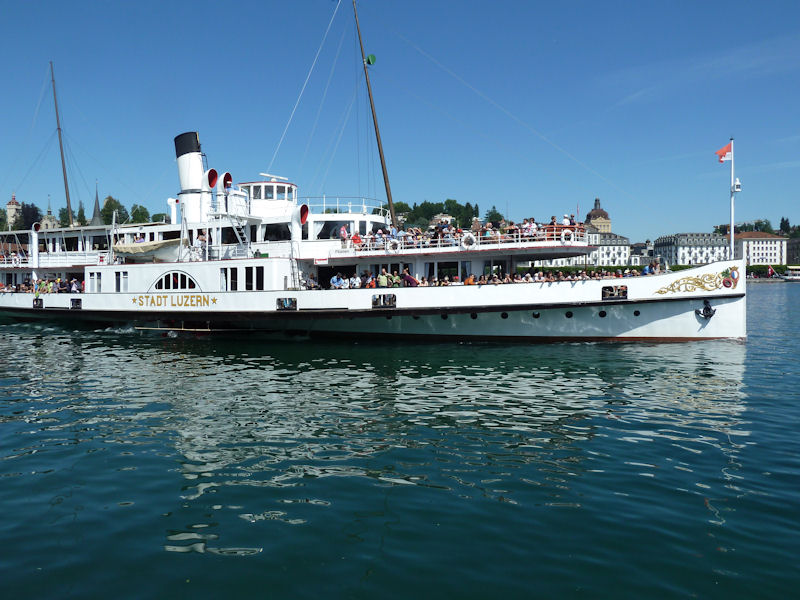
Four of Lake Lucerne's steamers date from 1901 to 1913, but this one is the runt of the litter, built in 1928.
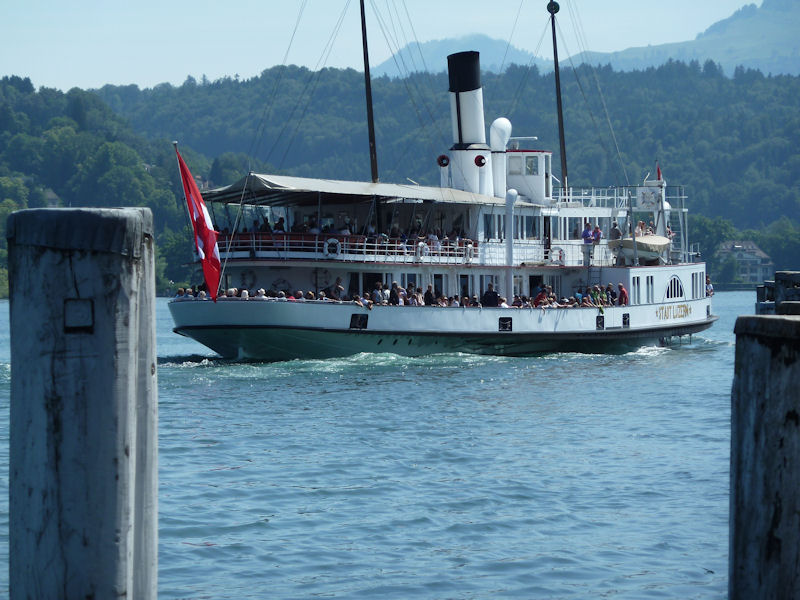
It's still a great looking boat nonetheless.
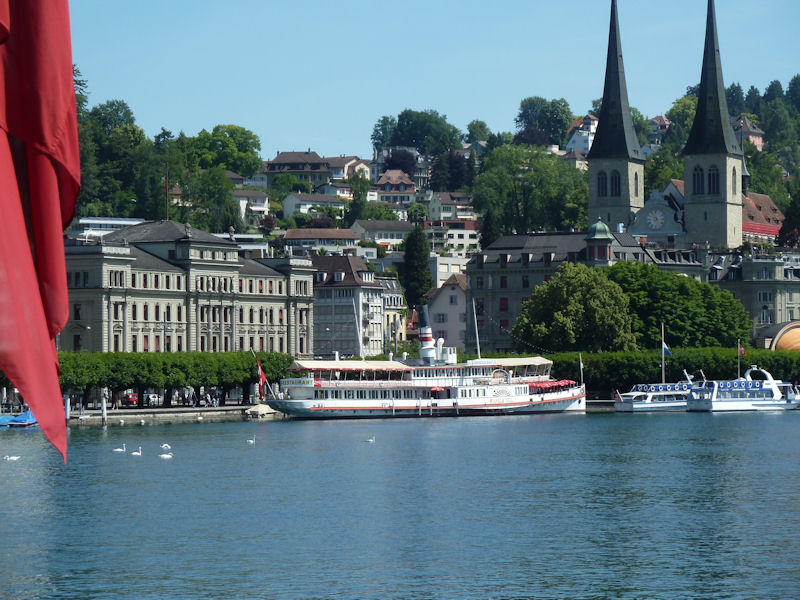
There's another one, the Wilhelm Tell moored near the Hof Church, but it doesn't look like it's going anywhere. (The Hof Church is Catholic -- Lucerne did some sort of timely jiggy-dance and escaped the Protestant Reformation, and it maintained a strong Roman influence in the country throughout the Counter-Reformation.)
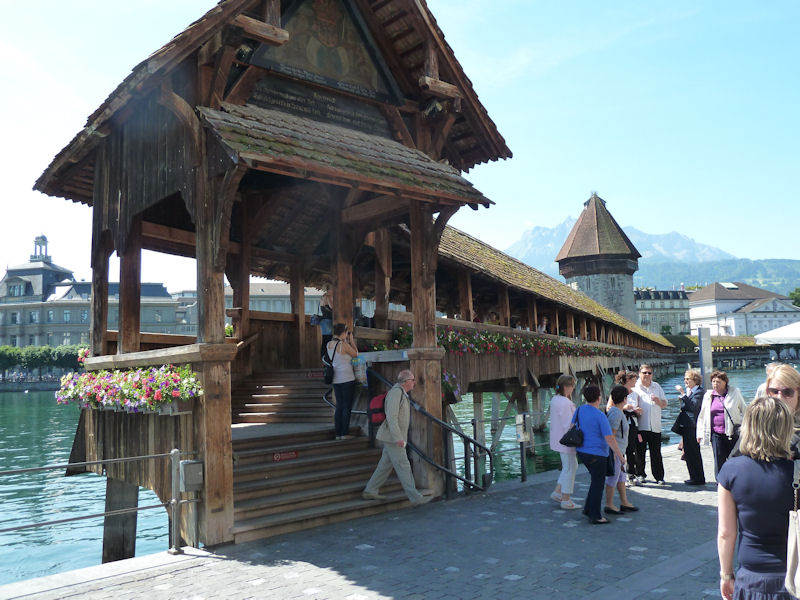
The Kapellbrücke, or Chapel Bridge, dates from 1333, evidently the oldest covered bridge in Europe, and spans the 200 metres over the mighty river Reuss where it leaves the lake and heads through the city for the North Sea.
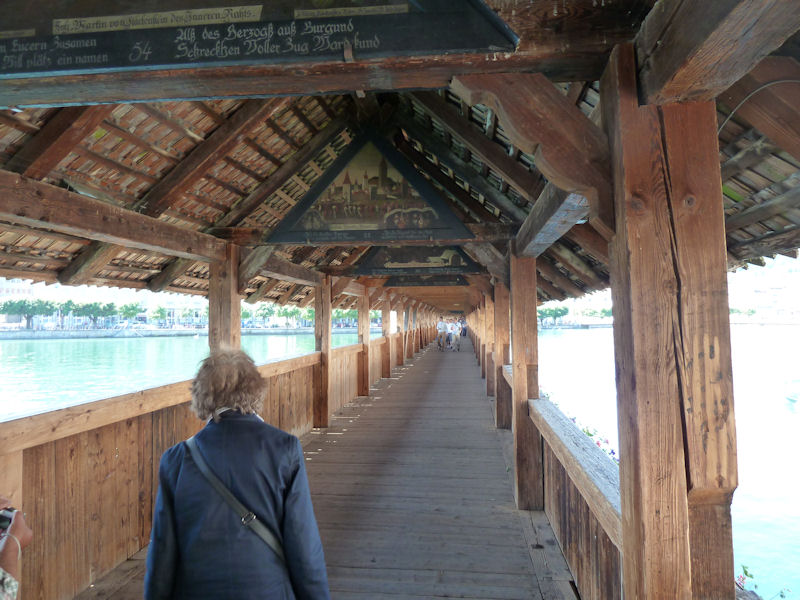
The ceilings long sported a series of 17th century paintings showing lurid events from the city's history, but most of them were lost in a horrible fire that swept the bridge in 1993.

The Kapellbrücke is the city's main tourist icon, arguably Switzerland's main tourist icon, along with the Matterhorn. People must have felt just awful after that fire.
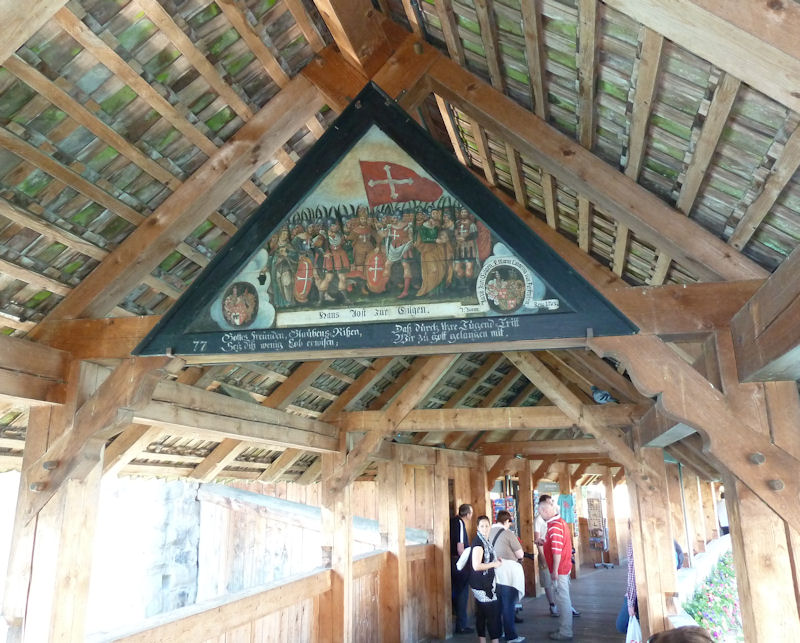
A sample of the artwork that survived.
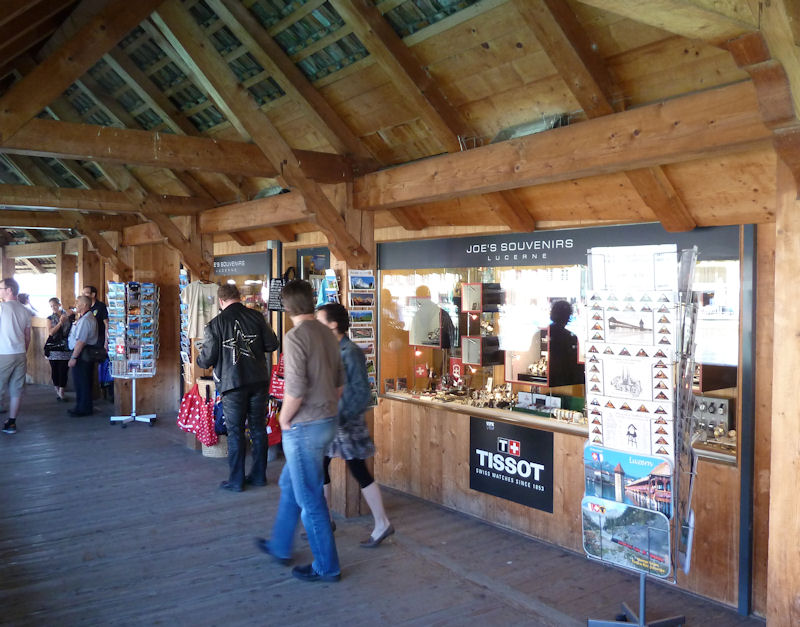
Halfway across the Kapellbrücke, Joe's Souvenirs.
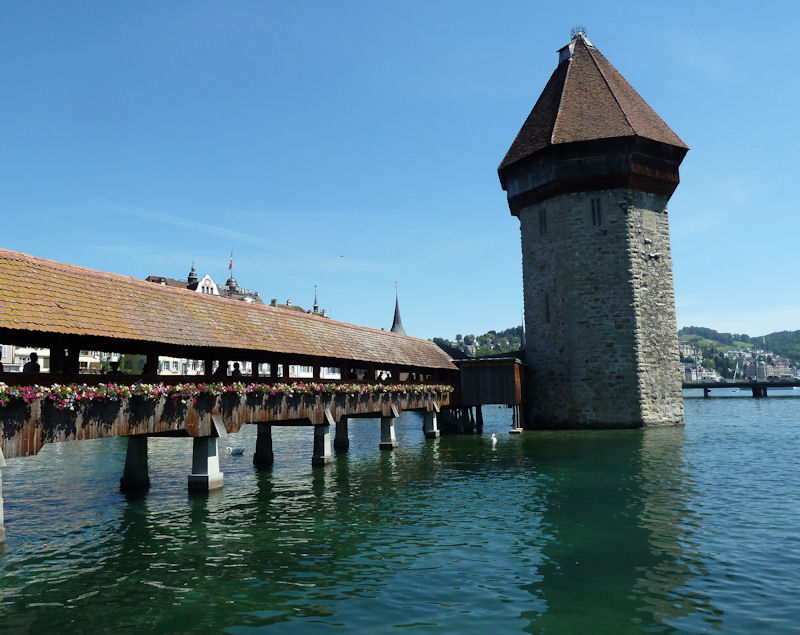
The Wasserturm, or Water Tower -- the one photo that, along with the Matterhorn and the Château de Chillon, will be found in every bag of gift chocolates.
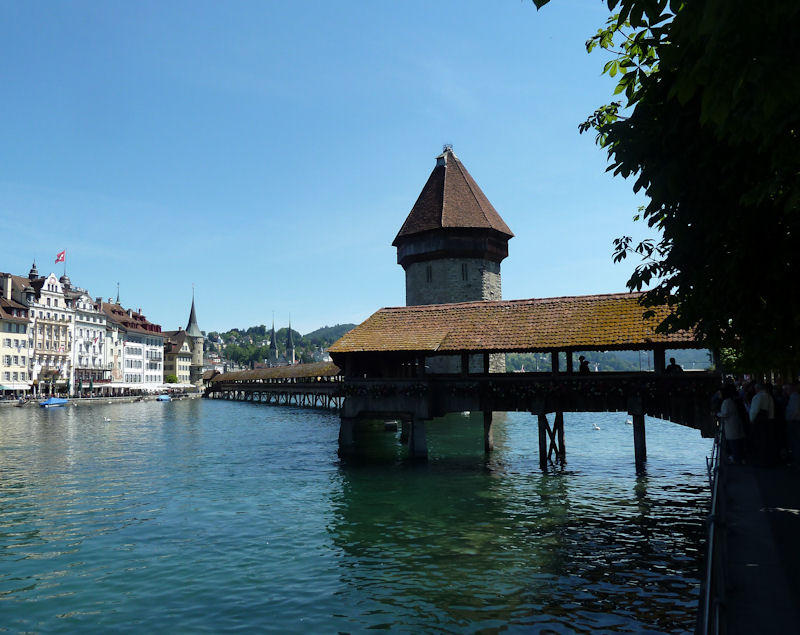
The Wasserturm has had a distinguished history as a prison, torture chamber, city treasury, and part of the medieval city fortification, as well as the home of Joe's Souvenirs.
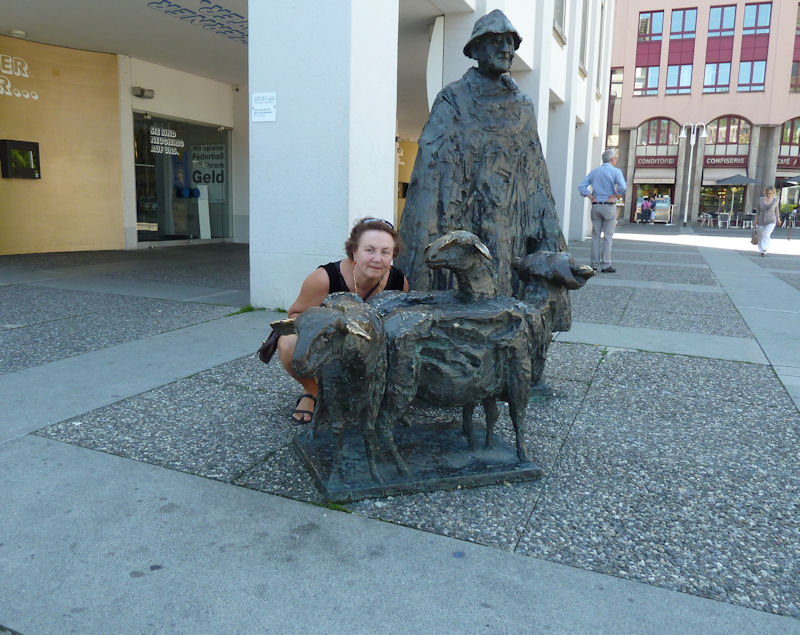
Kristin loves nothing so much as sheep and goats, even bronze ones. Except marmots.
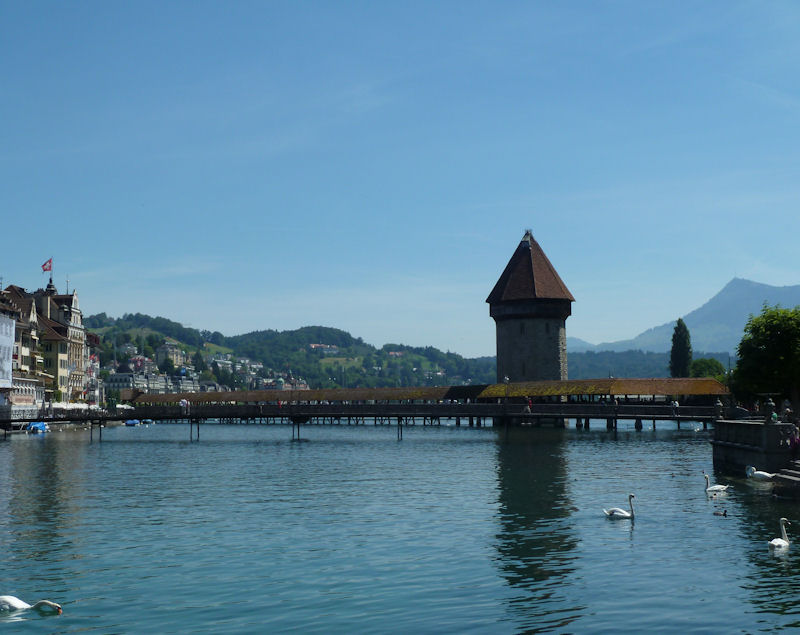
The Kapellbrücke again, with the Rigi in the right background
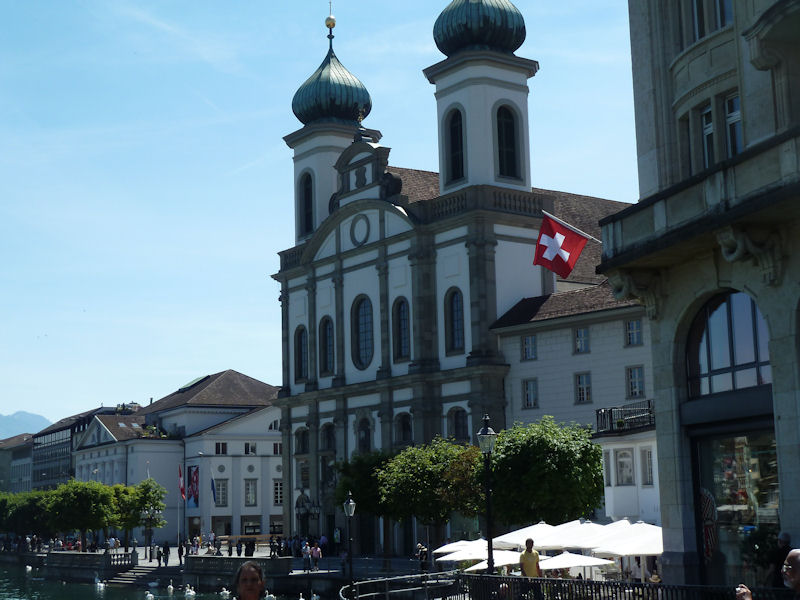
The 17th century baroque Jesuit Church, evidence of the city's historical Counter-Reformation prominence
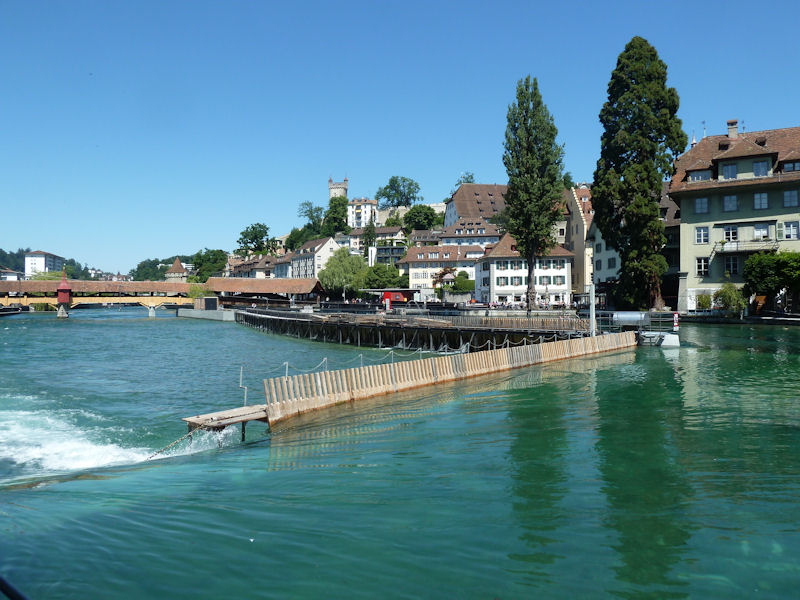
The city wall, the Museggmauer, still runs along the whole northern side of the Old City -- a length of it can be walked on, and three of the towers are open for a trot-up. That's the Männliturm on the horizon.
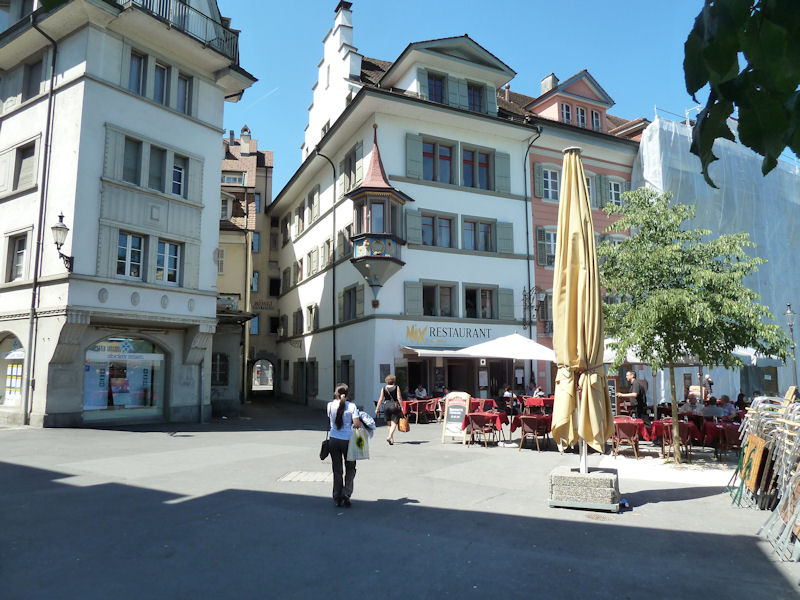
It's a brilliant warm day in late May, still free of the summer crowds
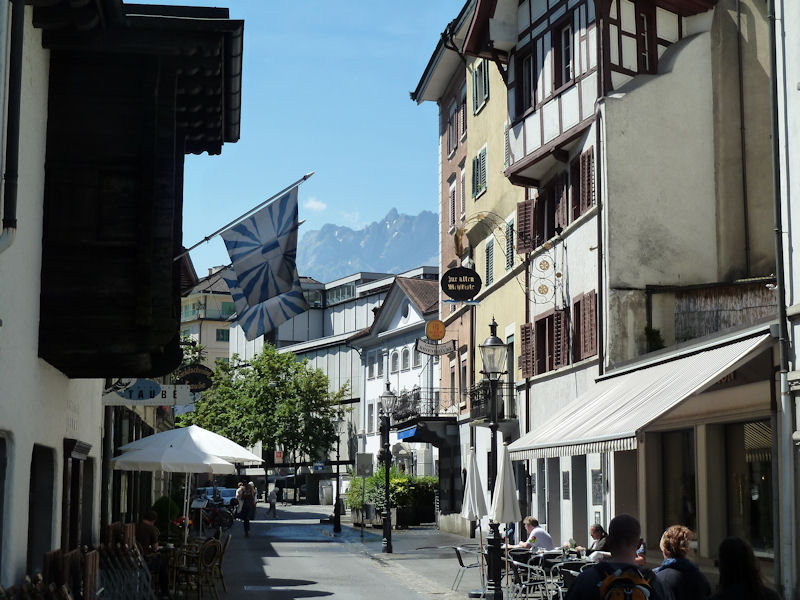
The Pilatus staring down on Lucerne
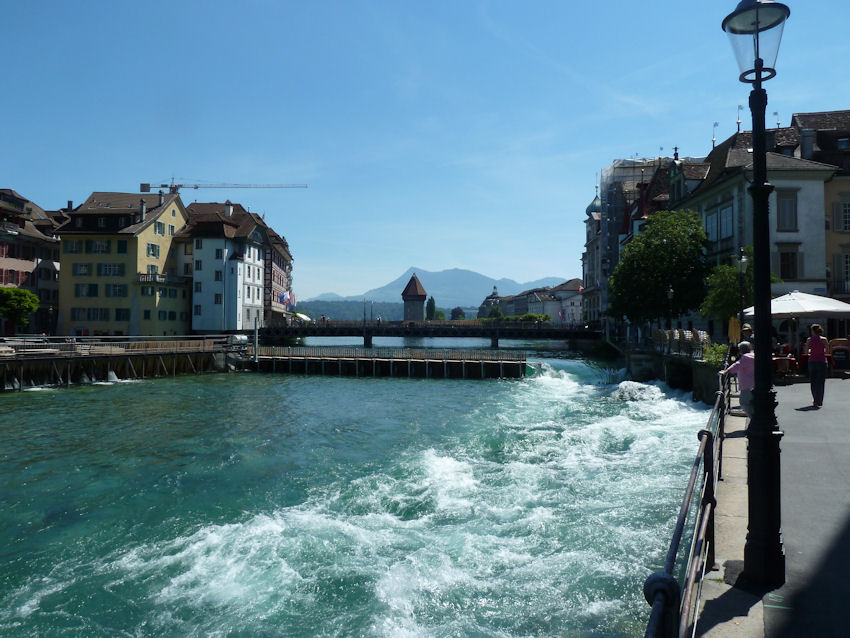
The river Reuss
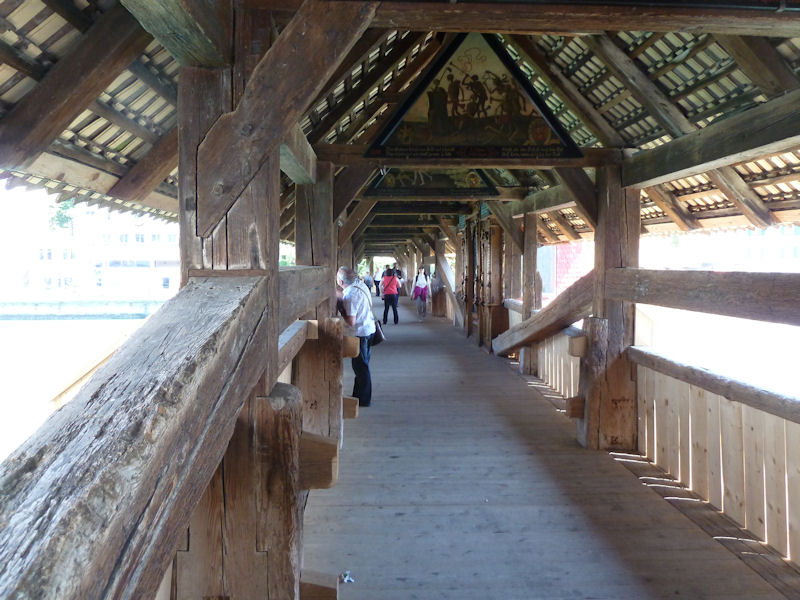
The Spreuerbrücke, dating from 1408, with its much more interesting "Dance of Death" paintings from the 17th century. Homey, pleasant scenes of city, country, and military life in which at least one of the participants is always Grinning Death.
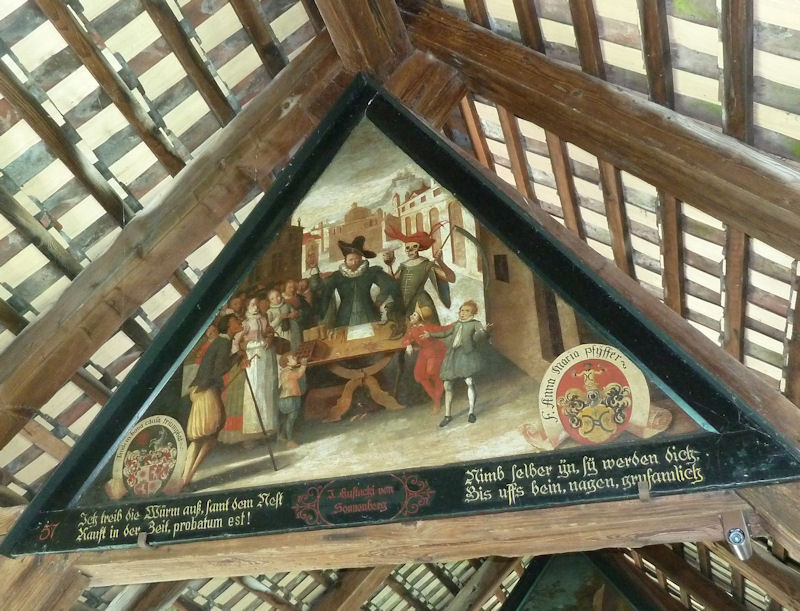
Like this one. Just to remind you, every day, as you're walking home with the groceries at the end of a hard day and glancing up, that you're as good as dead already.
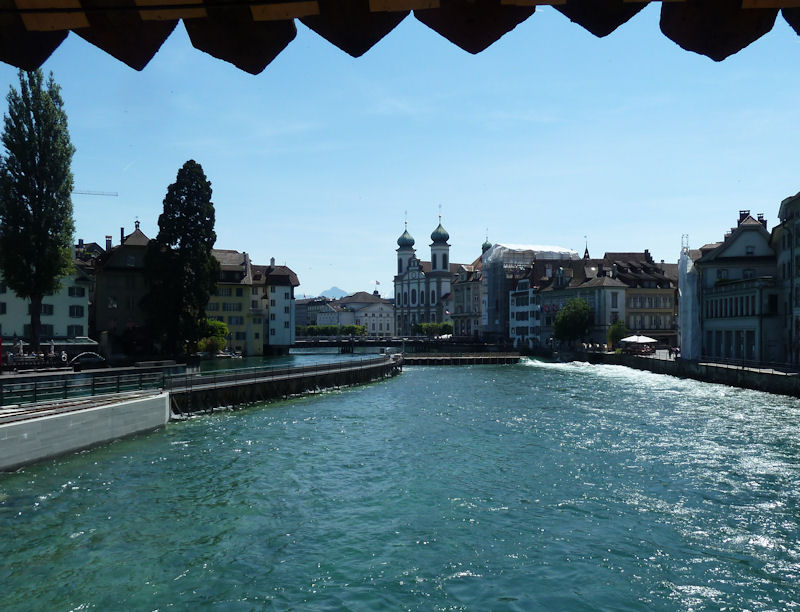
The river from the middle of the Spreuerbrücke
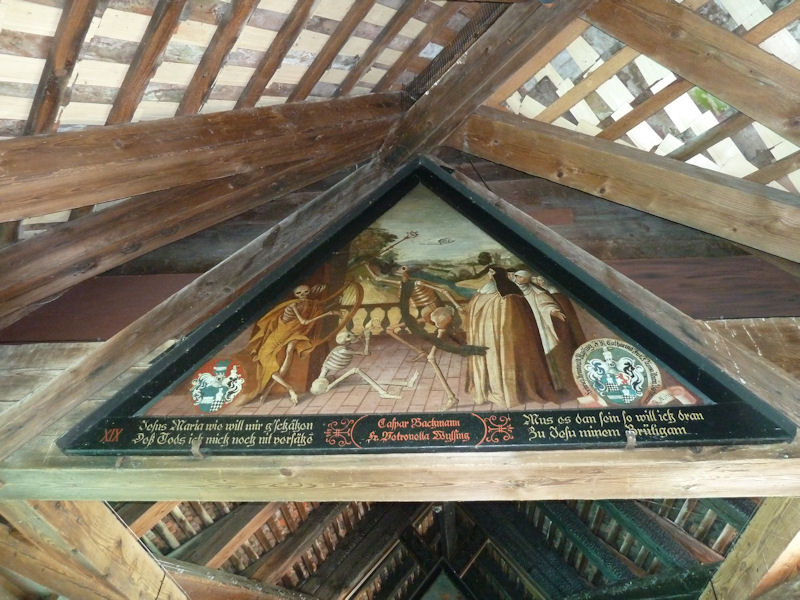
Even nuns get to dance along with the Death musicians

Every European city, in the summer, has got one.
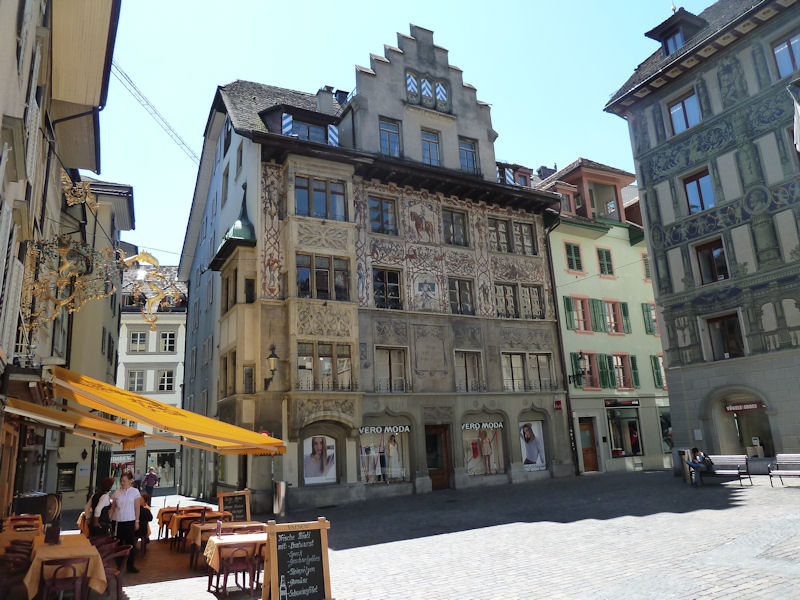
One of Lucerne's patented selling-points is the painted buildings motif, mostly good fun, sometimes a little exasperating and overdone.
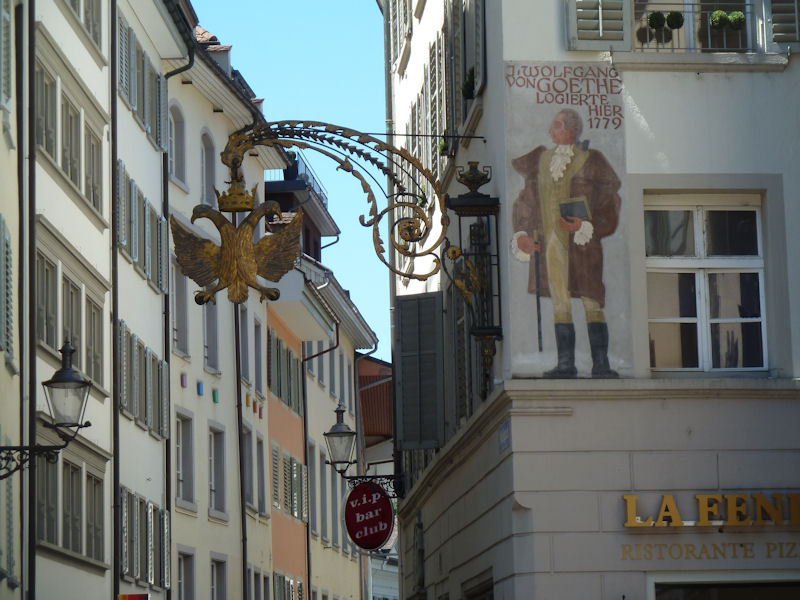
"George Washington slept here". Also Goethe, too.
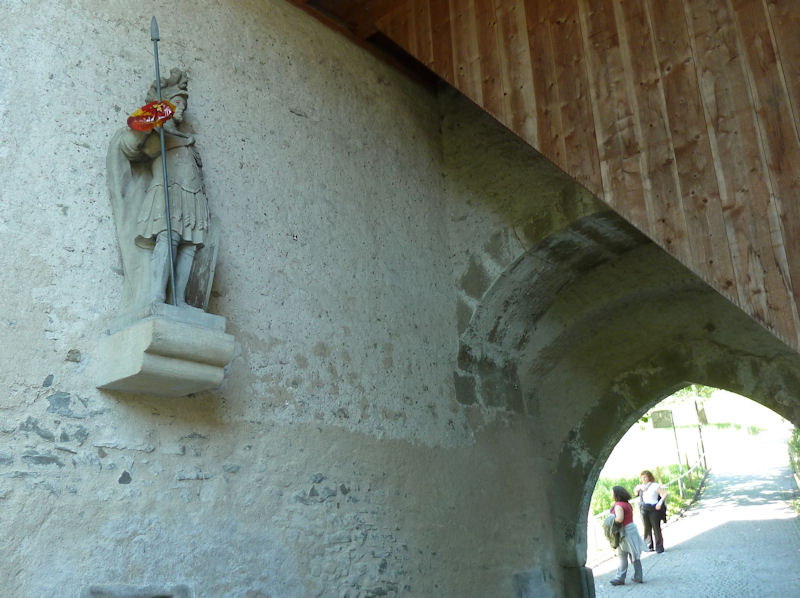
Up on the city wall, an ancient soldier, carrying his own urine sample.
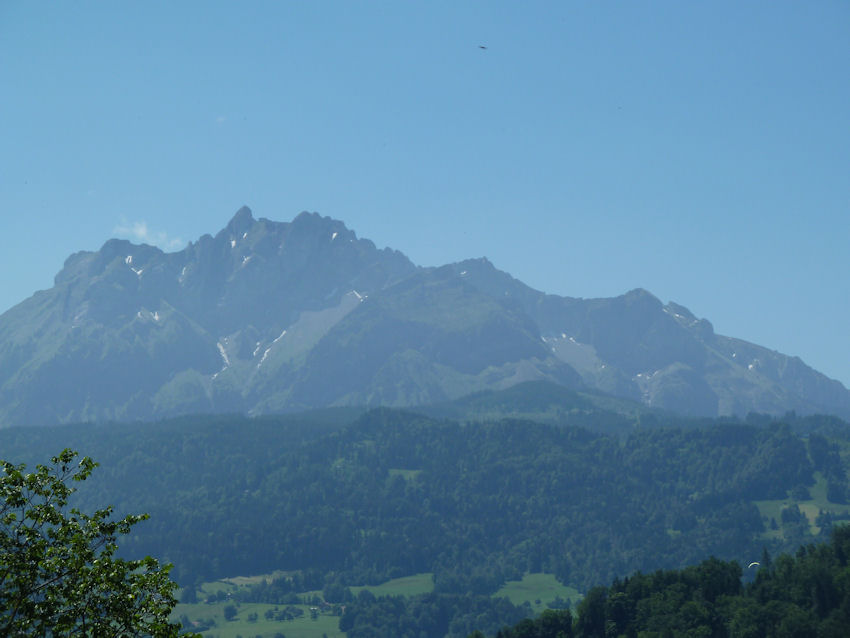
Pilatus from one of the towers on the city wall
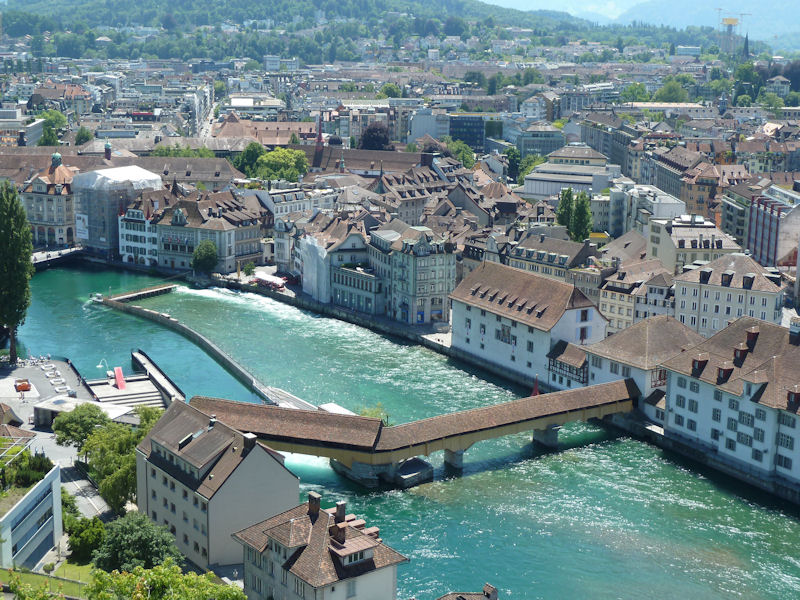
The Spreuerbrücke and river from one of the towers
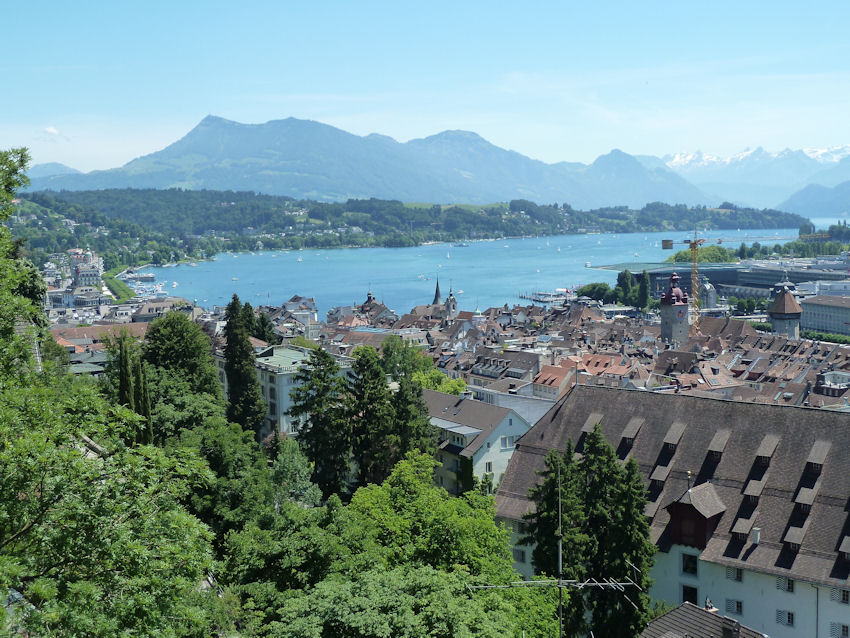
The city from the towers, with Rigi in the left background
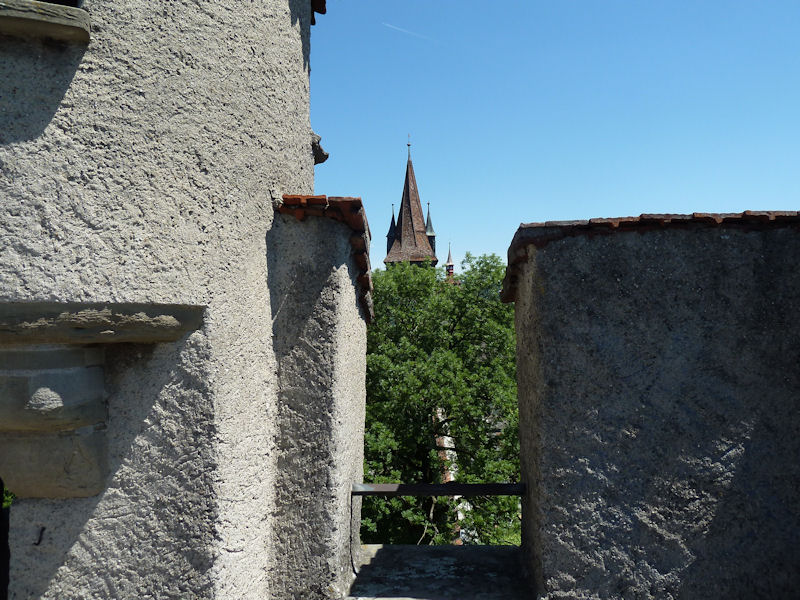
The city wall from the top of the Männliturm
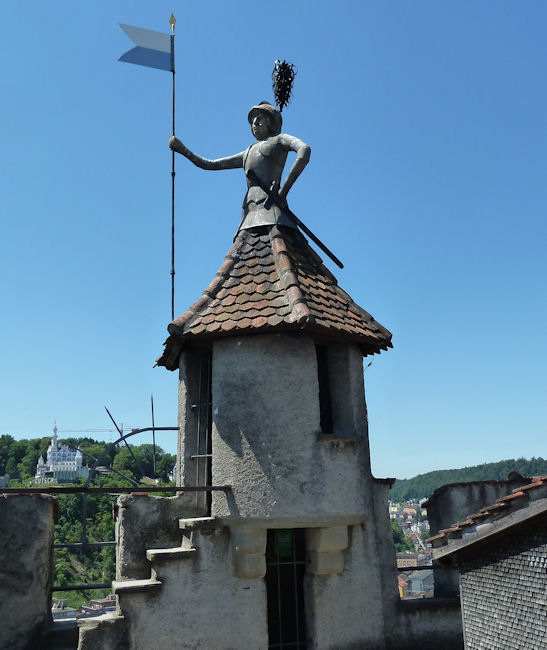
Well-guarded. The Château Gutsch is on the far hillside.

Down along the walls, where long ago peasant soldiers from Berne must have gnashed their teeth in frustration and had hot pitch dumped down on them.
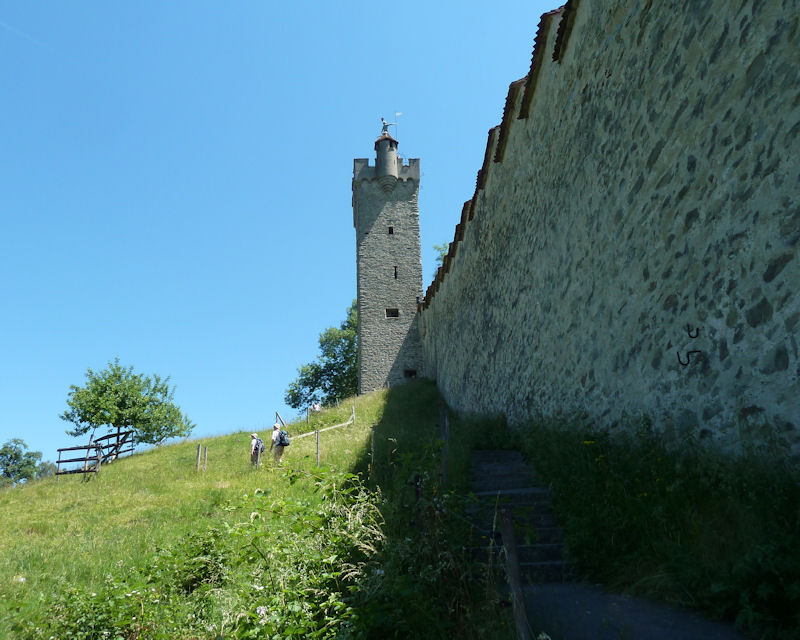
The Männliturm
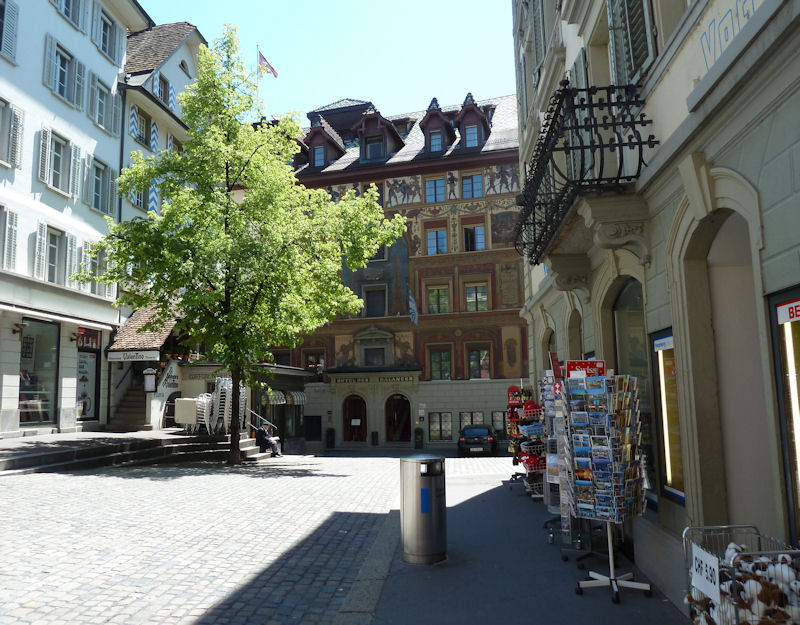
The famous Tree of Lucerne
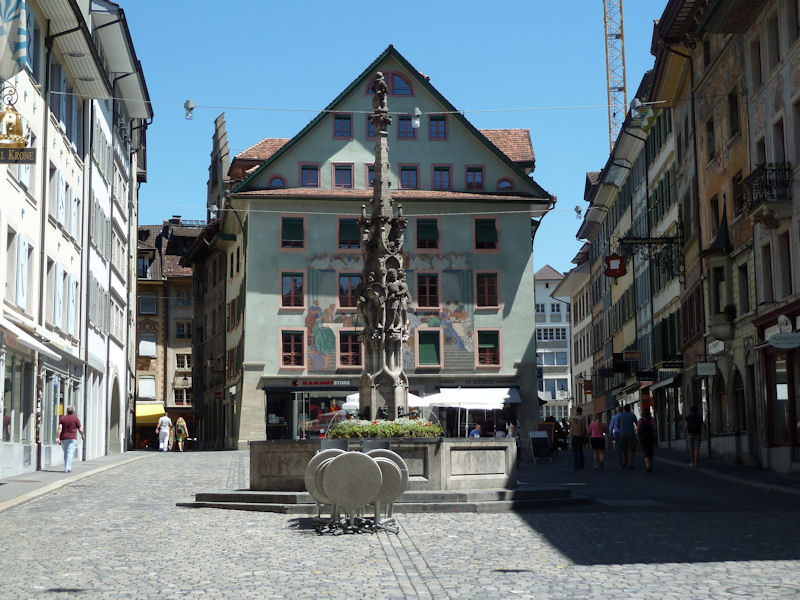
The Weinmarkt or medieval wine market part of the old city
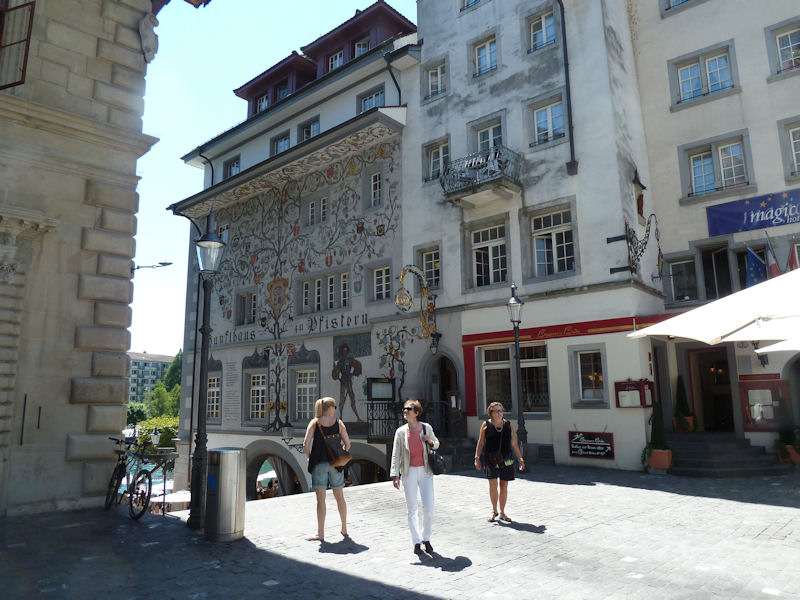
Near the Kornmarkt. We're looking for an inexpensive place to have lunch <smiley-face>.
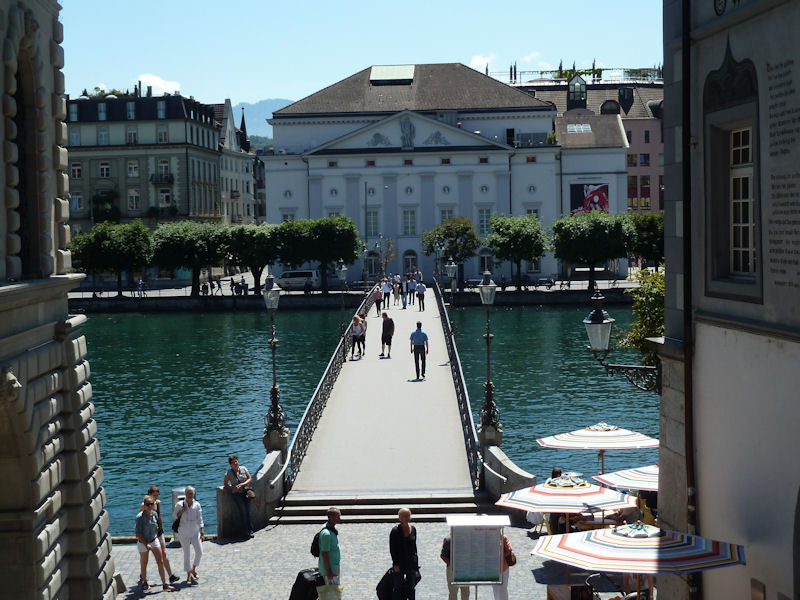
The bridge near the Kornmarkt, lined with restaurants and classy hotels all along this side of the river
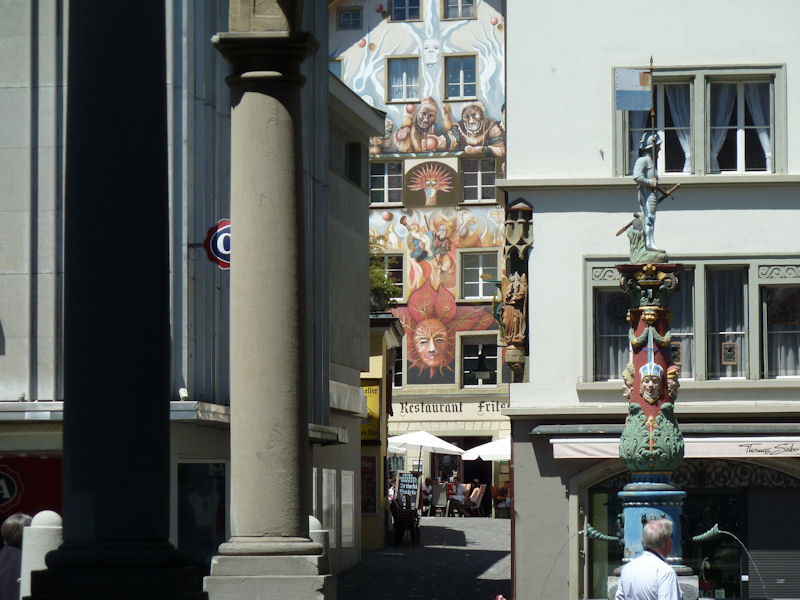
Painted buildings
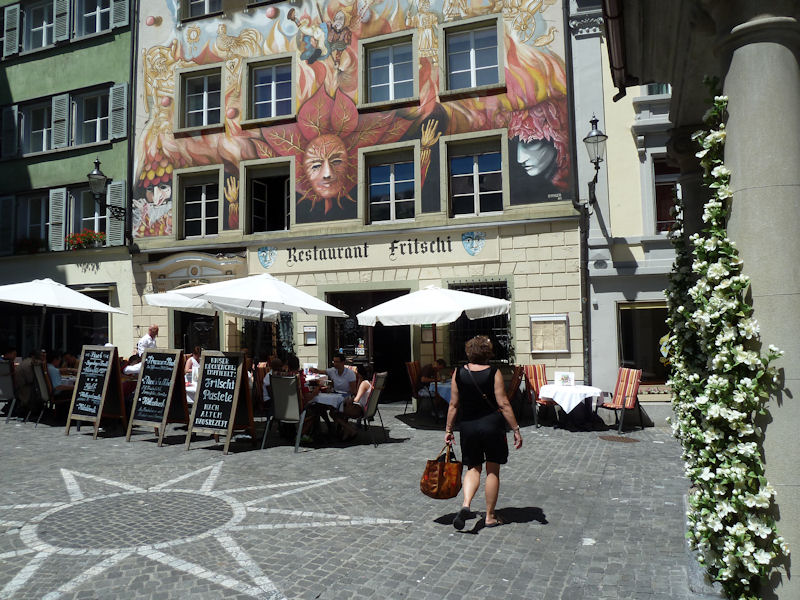
The Restaurant Fritschi. Probably too expensive.
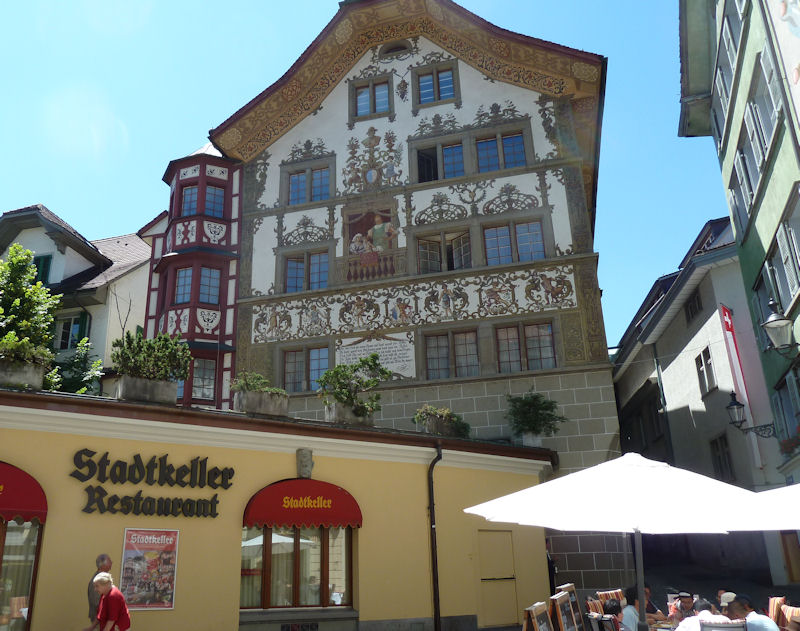
The famous tour-group destination, the Stadtkeller (likely too expensive). We stopped at an outdoor cafeteria/sandwicherie just a block further on, had a salad, a salami sandwich, a coke, and a glass of water -- only got us for 35 francs (US$ 41.50).
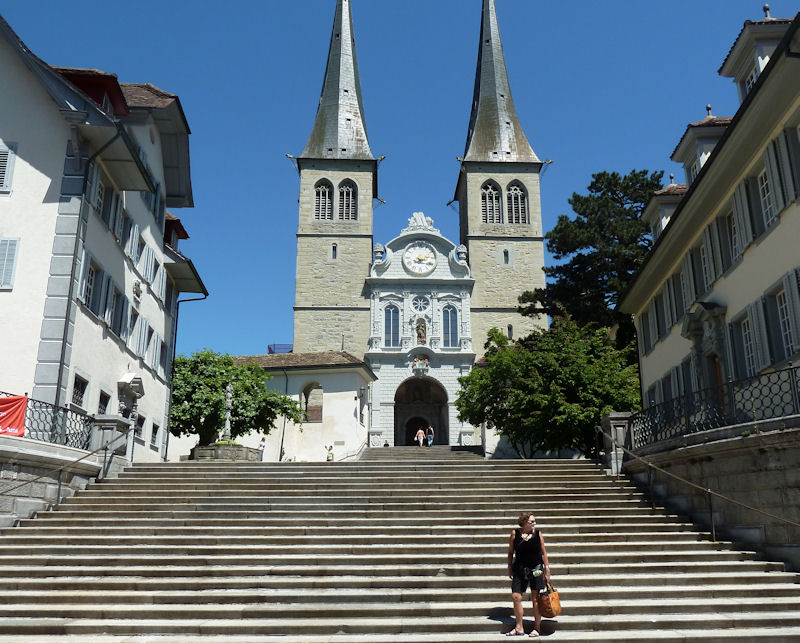
The Hof Church, Kristin viewing the action somewhere off-stage
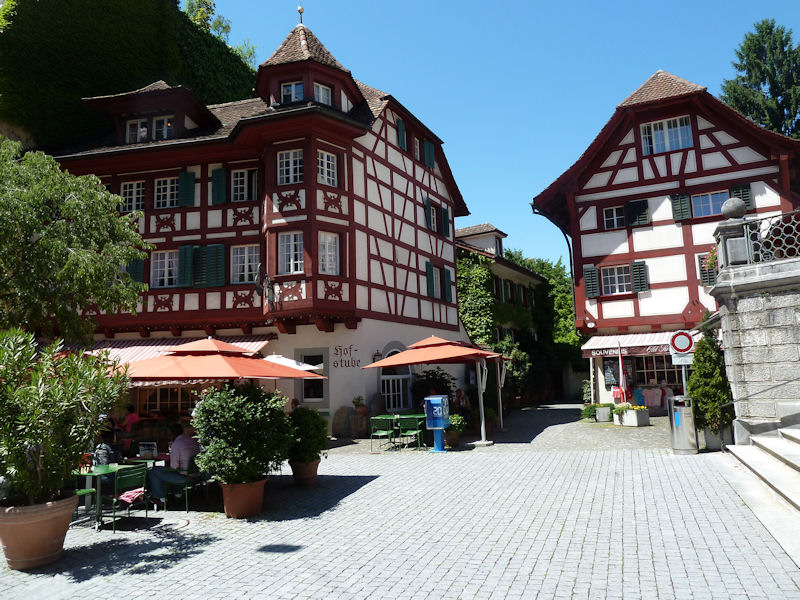
The church precincts
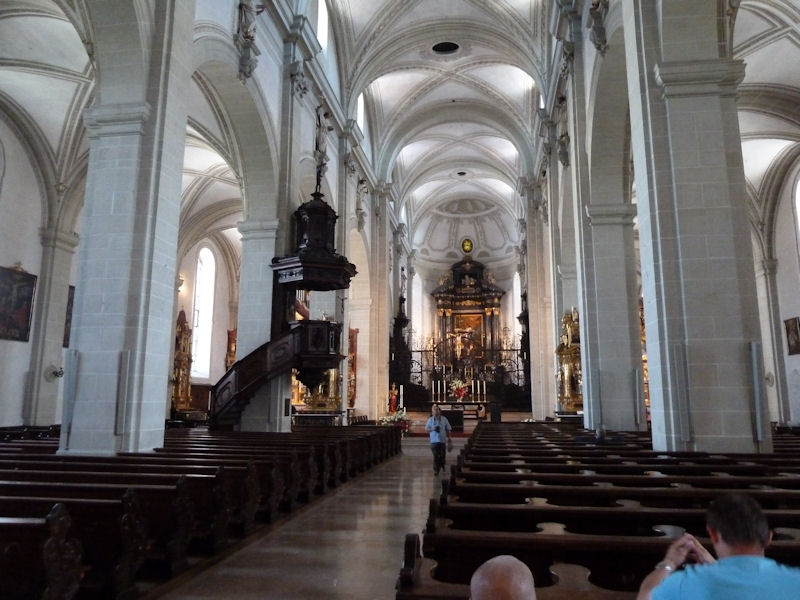
Inside the church: the adults' part of it
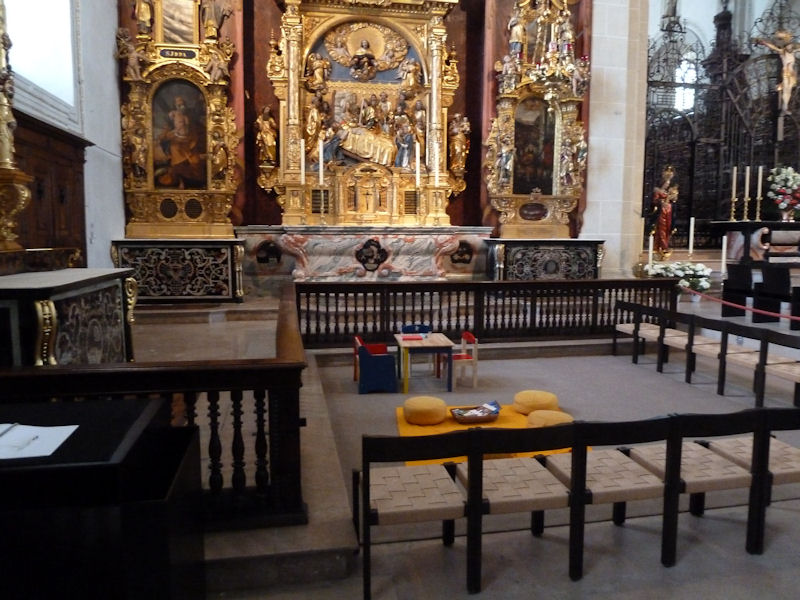
The kids' section
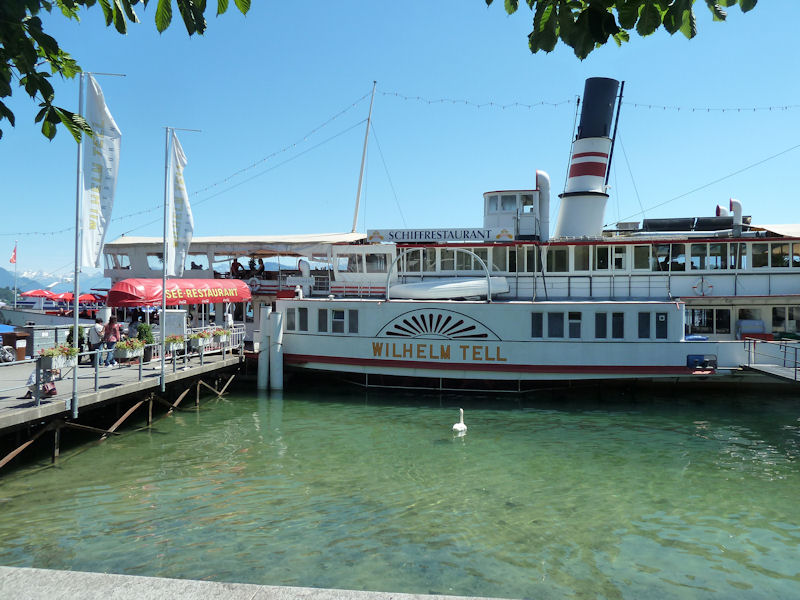
The Wilhelm Tell, fallen on hard times, or finally getting to enjoy his retirement. It's a permanently moored restaurant now. The Swiss petanque, or boule, tournament was going on here as we strolled past along the lakeside.
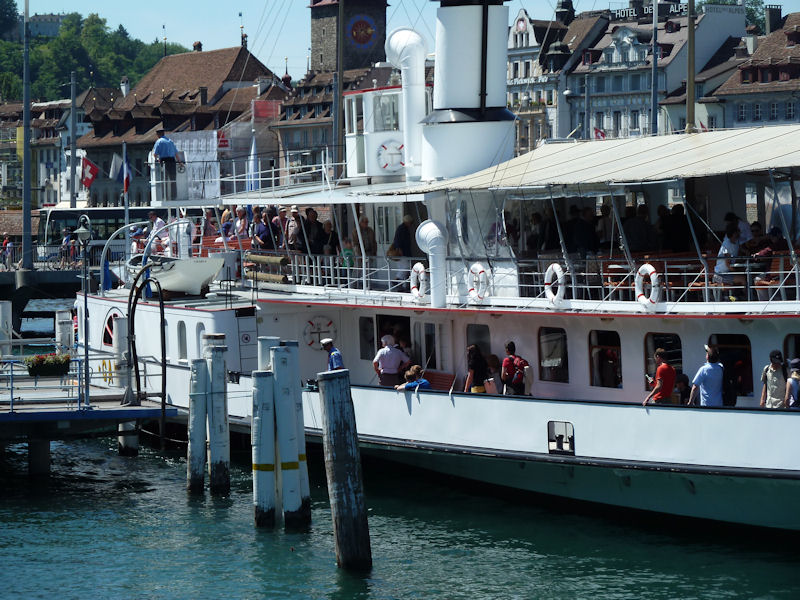
Another paddlewheel steamer, the Gallia (launched in 1913, the fastest of all Swiss paddlewheels), but it's the luck of the draw -- we're on the ordinary boat at the next dock.
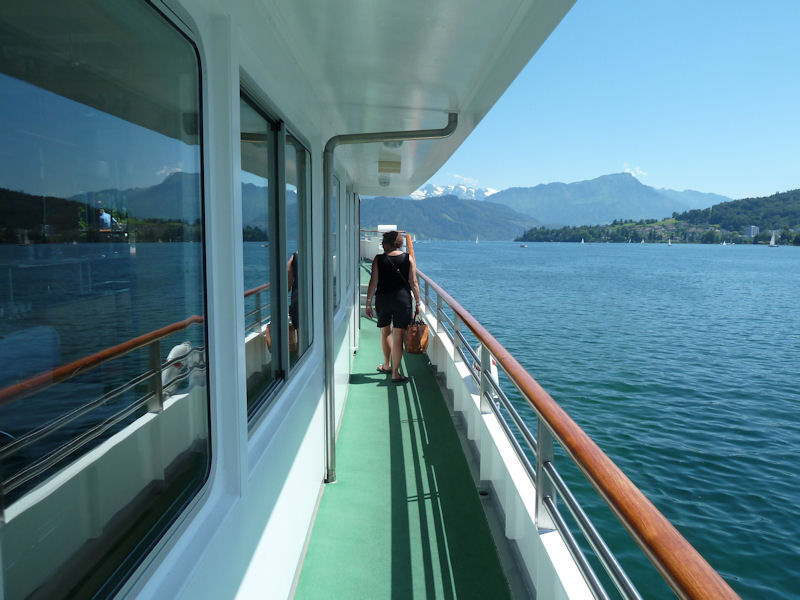
Off we go, and we're on the exclusive upper decks. Kristin sprang for first-class, probably a first for me, but it was only 5 francs more than second class (crowded amongst the peasants down below).
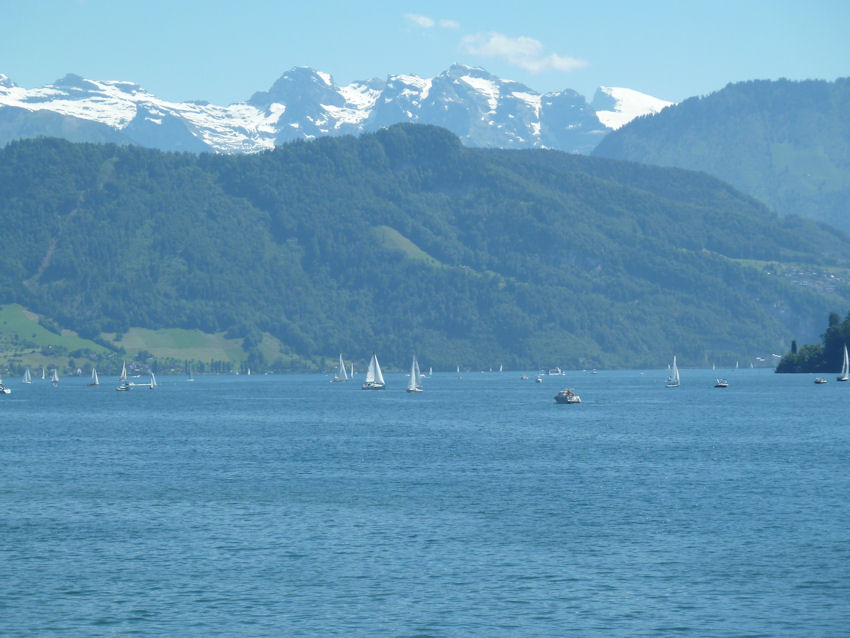
The Lake of the Four Forest Cantons
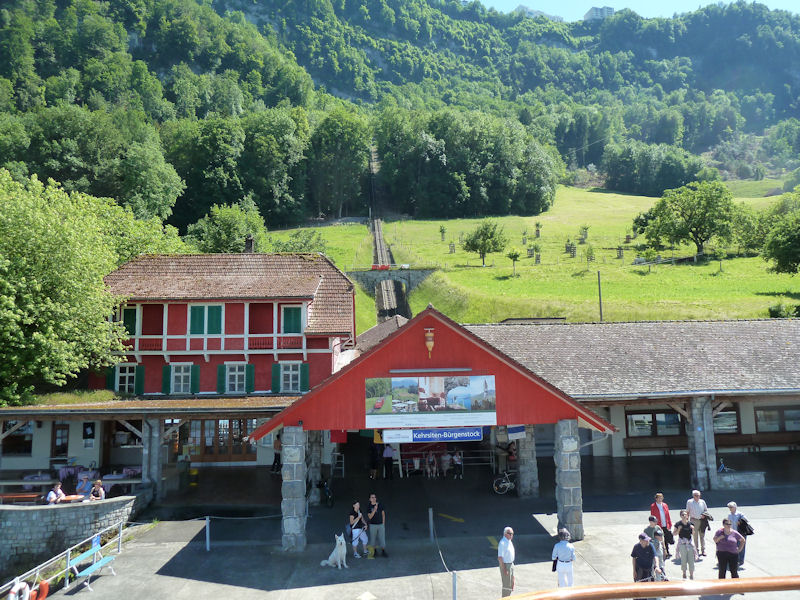
A stop at Kehrsiten, whence the rack-and-pinion rail car runs vertiginously up the front of those cliffs to Bürgenstock
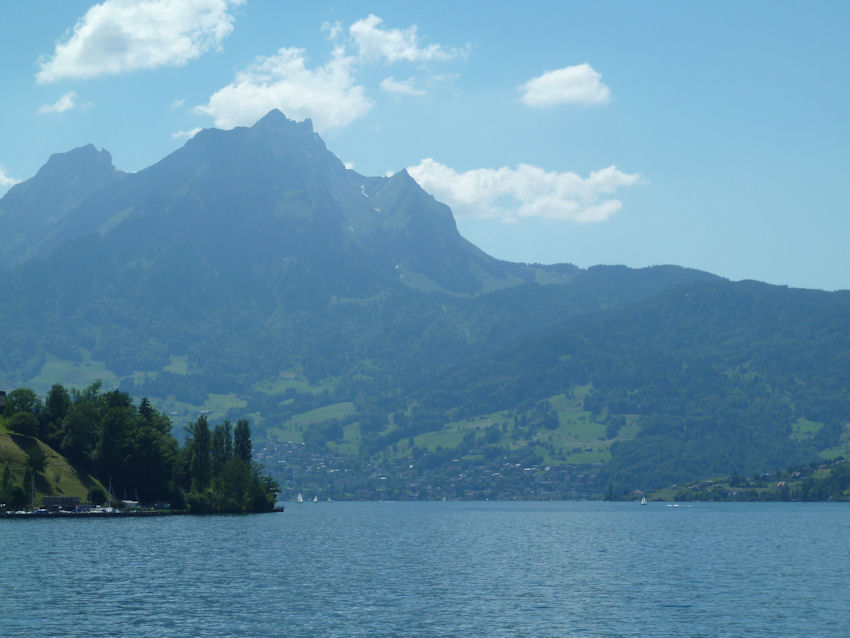
Pilatus, and Hergiswil at the foot of it
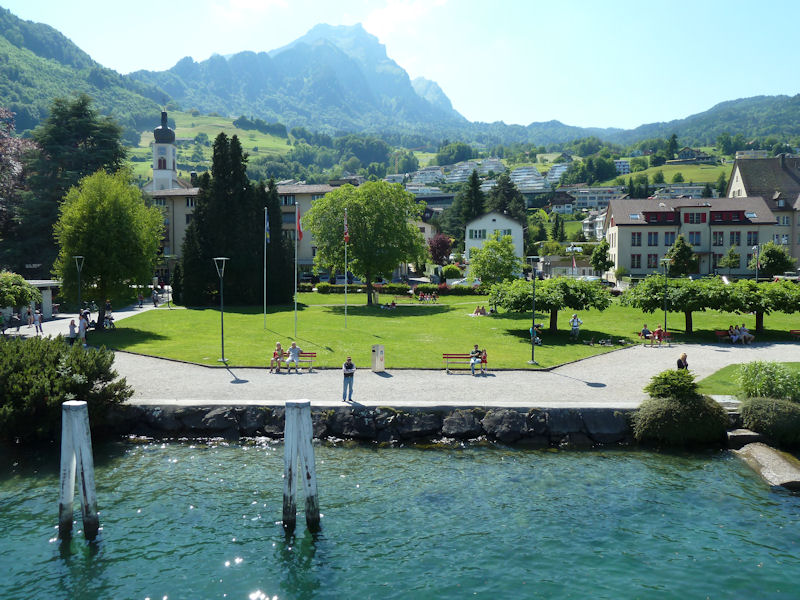
Arriving at the Hergiswil dock. Tomorrow we go out to Ebikon, on the far side of Lucerne, surrender our rusty, sputtering old VW to the dealers, hand over some money, and drive home in luxury.